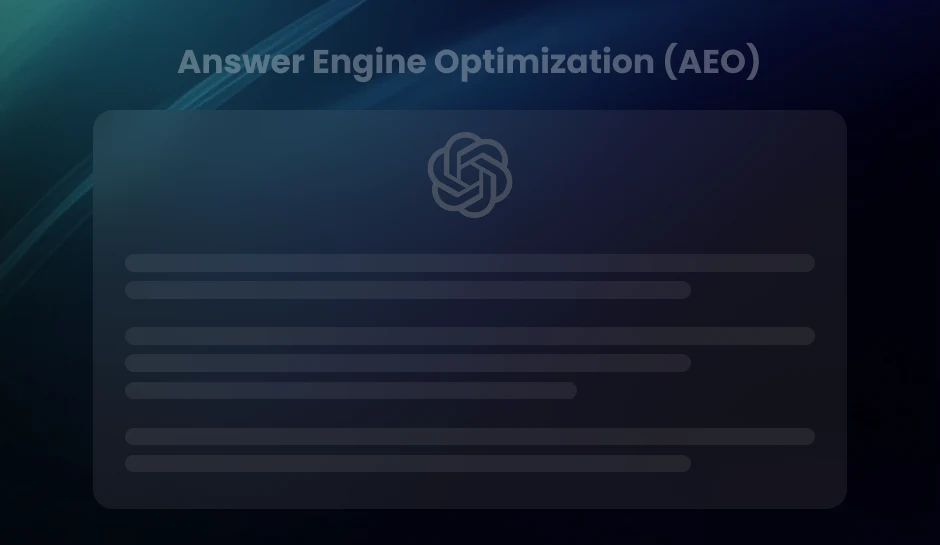
Top 7 AI-Powered Analytics Tools You Should Know in 2025
AI-powered analytics tools are transforming how modern B2B teams approach marketing, sales, and decision-making. This article explores 7 advanced platforms built for predictive insights, intelligent attribution, and real-time strategy shifts. Whether you are scaling, optimizing, or rethinking your data stack, these tools can help you get ahead of lagging dashboards and move toward outcomes that matter.
Think your analytics stack is doing enough? That assumption might be the reason your competitors are scaling faster than you.
While your team is still interpreting fragmented dashboards and debating past performance, your competitors are letting AI-powered analytics tools do the heavy lifting. These platforms are not built for hindsight. They are engineered for forward-looking decisions, real-time insights that reveal what is working, what is at risk, and what to prioritize next.
This shift is no longer a future trend. It is the current edge. Companies that adopt AI-driven intelligence into their marketing and sales operations are seeing clearer attribution, faster pipeline conversions, and more strategic alignment across teams.
If your current analytics setup cannot keep up with that pace, it is not just outdated; it is actively holding you back.
So, this blog is here to help you understand what you have been missing if you are still holding on to the traditional means. We have hashed up top tools that are changing how teams operate, tools designed not just to track performance but to improve it, intelligently and consistently.
But before we jump into the tools, let us quickly align what these AI-powered analytics tools really are, and how they are reshaping the way organizations extract value from their data.
Why Your Competitors Are Switching to AI-Powered Analytics Tools
Traditional analytics tools can tell you what happened. But what if you need to know what is likely to happen next, and why?
AI-powered analytics tools combine machine learning, natural language processing, and predictive modeling to analyze large volumes of data and produce insights that are not just descriptive, but prescriptive. They help teams go beyond the “what” and into the “so what”- making faster, more confident decisions that drive outcomes.
For instance, let us say you are running multiple paid campaigns across channels, you notice a spike in leads but cannot trace which message or medium made the impact. A traditional platform will show you the numbers, while an AI-powered tool will surface the underlying pattern. It can be high-intent users from a specific segment responded to urgency-based CTAs on mobile. It connects those dots to you in real time.
These tools make data actionable by turning fragmented metrics into valuable metrics you can use right now. They are especially powerful for teams that deal with complexity, multi-touch campaigns, long sales cycles, and siloed tech stacks.
1. DiGGrowth
DiGGrowth is an advanced AI-powered analytics tool built specifically for revenue-focused marketing and sales teams in the B2B SaaS ecosystem. Unlike generic platforms that rely on static dashboards and manual segmentation, DiGGrowth blends machine learning, predictive scoring, and automated attribution modeling to deliver insights that drive measurable pipeline impact.
This is not a tool built for vanity metrics. It is designed to help teams align revenue outcomes and make data-backed decisions faster. Whether you are optimizing campaigns, refining go-to-market strategies, or looking to eliminate inefficiencies in the funnel, DiGGrowth provides the clarity modern teams need to scale.
Key AI-Powered Features
- Automated Multi-Touch Attribution to accurately credit channels and content
- Customer Journey Mapping using behavioral data and AI
- Marketing ROI Insights that connect activities to actual revenue
- Intelligent Alerts that notify you of anomalies, risks, or hidden opportunities
Why You Need DiGGrowth in Your Stack
Because fragmented data and delayed insights slow down growth. DiGGrowth brings full-funnel visibility into a single, intelligent workspace so that marketing and sales do not just look at the same numbers; they act on them together. Its native integration capabilities with CRM platforms, MAPs, and data warehouses make it a seamless addition to existing stacks without adding tech debt.
Example:
A mid-stage SaaS company struggling with long sales cycles and inconsistent lead quality implemented DiGGrowth across its marketing and sales platforms. Within the first quarter, the predictive lead scoring engine helped reroute 30% of SDR focus to leads with a higher conversion probability.
At the same time, automated attribution revealed that a previously overlooked content series was influencing the late-stage pipeline more than paid search. With this clarity, the company reallocated spend and shortened its average sales cycle by 18 days, while increasing marketing-influenced revenue by 27%.
How To Get the Most Out of DiGGrowth
- Use predictive scoring to prioritize lead routing and campaign budgets.
- Rely on automated attribution to shift resources toward high-impact channels.
- Schedule cross-functional reviews using DiGGrowth dashboards to align GTM teams.
Tableau with Einstein Discovery
Tableau, long known for its robust data visualization capabilities, becomes significantly more powerful when integrated with Einstein Discovery, Salesforce’s AI engine. Together, they offer a hybrid solution that merges intuitive dashboards with advanced machine learning models, giving users not only the ability to visualize performance but also to understand what is driving it and what to expect next.
This integration enables SaaS teams to move beyond static reporting. It turns Tableau into a platform that does more than show you what happened; it explains why and projects what is likely to happen next, all on the same interface. AI-Powered Features
- Automated Predictions based on trends and historical performance
- Natural Language Explanations that clarify AI-generated forecasts in everyday business terms
- Built-In Trend Detection to highlight shifts in user behavior, conversions, or spend across time
AI-Powered Features
- Automated Predictions based on trends and historical performance
- Natural Language Explanations that clarify AI-generated forecasts in everyday business terms
- Built-In Trend Detection to highlight shifts in user behavior, conversions, or spend across time
Where the Platform Excels
Tableau with Einstein Discovery is ideal for companies that require highly customized visual reporting while also wanting scalable, AI-supported insights. Whether you are pulling data from product analytics, CRM, or revenue ops platforms, Tableau structures it all into a format that suits both analysts and business decision-makers.
Adobe Sensei
Adobe Sensei is built to support enterprise-level marketing efforts by turning massive datasets into actionable insights, often in real time. For B2B SaaS organizations with multi-channel strategies, Adobe Sensei helps uncover what is working, what is not, and how to personalize outreach at scale.
This tool is especially valuable for teams running content-heavy, segmented campaigns where optimizing behavior and engagement is mission-critical.
Use Case: Personalizing ABM at Scale
A B2B SaaS company targeting enterprise accounts implemented Adobe Sensei to improve Account-Based Marketing (ABM) engagement. By feeding first-party data from web interactions and email responses into Adobe’s AI, they were able to personalize landing pages, retarget ads, and suggest next-best actions for each buying committee member.
Outcome: A 32% increase in engagement across target accounts and a measurable increase in pipeline acceleration within just one quarter. This use case illustrates how Adobe Sensei does not just analyze data, it applies it to high-value decision-making in complex B2B environments.
IBM Watson Analytics
IBM Watson Analytics brings the power of deep learning and natural language processing into business analytics. Positioned for companies that deal with large, complex datasets, Watson enables users to interact with data conversationally, identify trends, and generate forecasts without requiring advanced data science skills.
For B2B SaaS teams, it offers a structured way to explore customer behavior, product usage trends, and revenue signals in a highly intuitive environment.
AI-Powered Features
- Conversational Data Queries using natural language inputs
- Predictive Modeling that recommends likely business outcomes
- Advanced Pattern Recognition to detect correlations across multiple metrics
- Machine-Led Data Preparation that automates cleaning and structuring of raw datasets
How It Is Changing the AI Landscape
IBM Watson Analytics is pushing AI adoption beyond marketing dashboards. It enables decision-makers in product, finance, and operations to build their own models and access insights with minimal technical dependency. By decentralizing access to smart analytics, Watson is transforming how companies treat data, not as a back-office function, but as a real-time performance lever across the business.
Its enterprise-grade security and multi-source integration support also make it a strong fit for organizations with strict compliance requirements and highly distributed data environments.
Zoho Analytics
Zoho Analytics is an end-to-end BI and analytics platform that combines automated data preparation, AI-powered insights, and collaborative dashboards into one cohesive environment. While often seen as a mid-market solution, its AI capabilities, especially through its Zia engine, make it a serious contender for SaaS businesses looking to centralize analytics across teams.
AI-Powered Features
- Zia Insights for automated trend analysis and narrative explanations
- Conversational Analytics via voice or chat for instant answers
- AI-Driven Forecasting for revenue, churn, and resource allocation
- Smart Data Alerts to flag anomalies or trigger workflows
How To Get the Most Out of Zoho Analytics
- Centralize Your Data:
- Use Embedded BI:
- Set Proactive Alerts:
Connect CRM, marketing, support, and finance data sources to build a unified analytics foundation.
Bring analytics into your internal apps or customer portals without switching tools.
Let the platform notify you before small issues become big problems.
Pro Tip-For growing SaaS companies, Zoho Analytics delivers AI-powered intelligence without overwhelming complexity, making it easier to drive adoption across non-technical teams.
Heap
Heap offers a unique value proposition: it automatically captures every user interaction on your product, from clicks and swipes to form fills and page views, without requiring manual event tracking. Paired with Heap Illuminate, its AI engine, the platform transforms raw behavioral data into clear, actionable insights.
This makes Heap especially effective for SaaS companies looking to tighten product-market fit, reduce churn, and optimize user flows based on real behavioral evidence.
AI-Powered Features
- Automatic Data Capture with no-code instrumentation
- Heap Illuminate for automated insight surfacing
- Predictive Signals to flag cohorts likely to convert, upgrade, or churn
Where the Platform Excels
Heap stands out in product-led growth environments where deep visibility into user behavior is essential. Its strength lies in surfacing insights that other tools miss, especially micro-conversions, feature adoption curves, and subtle UX issues that affect retention.
It is also a strong fit for cross-functional SaaS teams: product managers, UX designers, marketers, and customer success teams can all work from the same data without custom queries or engineering support. Heap turns the “guesswork” of user behavior into measurable, testable strategy.
AgencyAnalytics
AgencyAnalytics is a reporting platform designed for marketing agencies and multi-brand SaaS businesses that manage performance across numerous accounts. What sets it apart is its ability to turn complex, multi-channel data into clean, automated dashboards that are client-ready. With recent AI integrations, the platform has moved beyond static dashboards, offering smart summaries, performance predictions, and campaign suggestions.
AI-Powered Features
- AI Report Summaries that auto-generate key insights from campaign data
- Performance Forecasting for PPC, SEO, email, and more
- Intelligent KPI Tracking to identify and surface underperforming metrics
- AI Content Suggestions for reports and client updates
Benefit: Simplifies Complex Client Reporting
If you are a B2B SaaS company with multiple business units, partners, or regional teams, AgencyAnalytics makes it easy to scale reporting without sacrificing depth or clarity. Whether you are managing Google Ads, SEO rankings, email performance, or CRM data, the platform streamlines how results are presented and understood. internally and externally.
Key Takeaways
- Leverage real-time insights to respond faster and smarter to changing performance signals.
- Prioritize leads and campaigns with predictive scoring instead of relying on gut instinct.
- Align sales and marketing around shared metrics using unified, intelligent dashboards.
- Detect friction and drop-offs early using behavioral data mapped through AI.
- Turn data from a reactive reporting tool into a proactive growth enabler.
Conclusion
Today’s growth-focused teams need more than data, they need decisions at speed and at scale. AI-powered analytics tools are not just better versions of old systems. They are fundamentally different in how they think, respond, and reveal what really matters for pipeline, revenue, and retention.
If your team is still debating metrics after the quarter ends, it is time to reframe how you work with data. By putting machine learning, automation, and predictive modeling at the center of your stack, you not only keep up, you lead.
Your next milestone is not a guess. Let DiGGrowth show you the data path to get there.
SOur experts at DiGGrowth can help you redesign your analytics strategy, automate what slows you down, and embed AI where it matters most, in your revenue engine. Get in touch: info@diggrowth.com to learn more and get started right away.
Ready to get started?
Increase your marketing ROI by 30% with custom dashboards & reports that present a clear picture of marketing effectiveness
Start Free Trial
Experience Premium Marketing Analytics At Budget-Friendly Pricing.

Learn how you can accurately measure return on marketing investment.
Additional Resources
Don’t Let AI Break Your Brand: What Every CMO Should Know
AI isn’t just another marketing tool. It’s changing...
Read full post postFrom Demos to Deployment: Why MCP Is the Foundation of Agentic AI
A quiet revolution is unfolding in AI. And...
Read full post postAnswer Engine Optimization (AEO): The New Frontier of SEO in 2025
As digital experiences continue to evolve, so does...
Read full post postFAQ's
AI analytics tools create shared dashboards, generate real-time alerts, and automate data interpretation, helping marketing, sales, and RevOps align faster. This reduces miscommunication and allows all teams to work from the same insights without needing data scientists or analysts to translate the metrics.
Analytical tools help small teams prioritize leads, reduce wasted spend, and act faster with limited resources. AI insights also highlight early patterns that can inform product decisions and GTM strategies without needing complex infrastructure.
Most platforms are built for non-technical users, offering intuitive dashboards, natural language queries, and visual insights. However, having a basic understanding of key metrics, attribution, and funnel stages can help teams interpret recommendations more effectively and act with greater confidence.
Leading AI analytics tools are built with compliance in mind, offering features like data encryption, role-based access, and audit trails. Some also support GDPR, SOC 2, and HIPAA standards, ensuring secure handling of customer and behavioral data across global markets.


